Environmental Supply Chain Sustainability: Tactics, Benefits and Barriers
As sustainability moves from buzzword to brand requirement, how are leaders building more environmentally sustainable supply chains, and what barriers are they facing?
One minute insights:
 Leaders rely upon sustainability assessments to understand the environmental impact of their current supply chain practices and identify areas for improvement, but may not be performing them thoroughly enough
Leaders rely upon sustainability assessments to understand the environmental impact of their current supply chain practices and identify areas for improvement, but may not be performing them thoroughly enough A lack of regulatory clarity, resistance to change and a lack of supply chain transparency remain key barriers in improving supply chain sustainability
A lack of regulatory clarity, resistance to change and a lack of supply chain transparency remain key barriers in improving supply chain sustainability Leaders remain split on the importance of sustainable supply chains, and many rate their organizations sustainability practices as fair to poor
Leaders remain split on the importance of sustainable supply chains, and many rate their organizations sustainability practices as fair to poor
Supply chain sustainability is no longer in its infancy, but leaders are split on its importance
47% of respondents say their organization has been implementing environmentally sustainable practices across its supply chain for 1-3 years.
How long has your company been implementing environmentally sustainable practices across its supply chain?
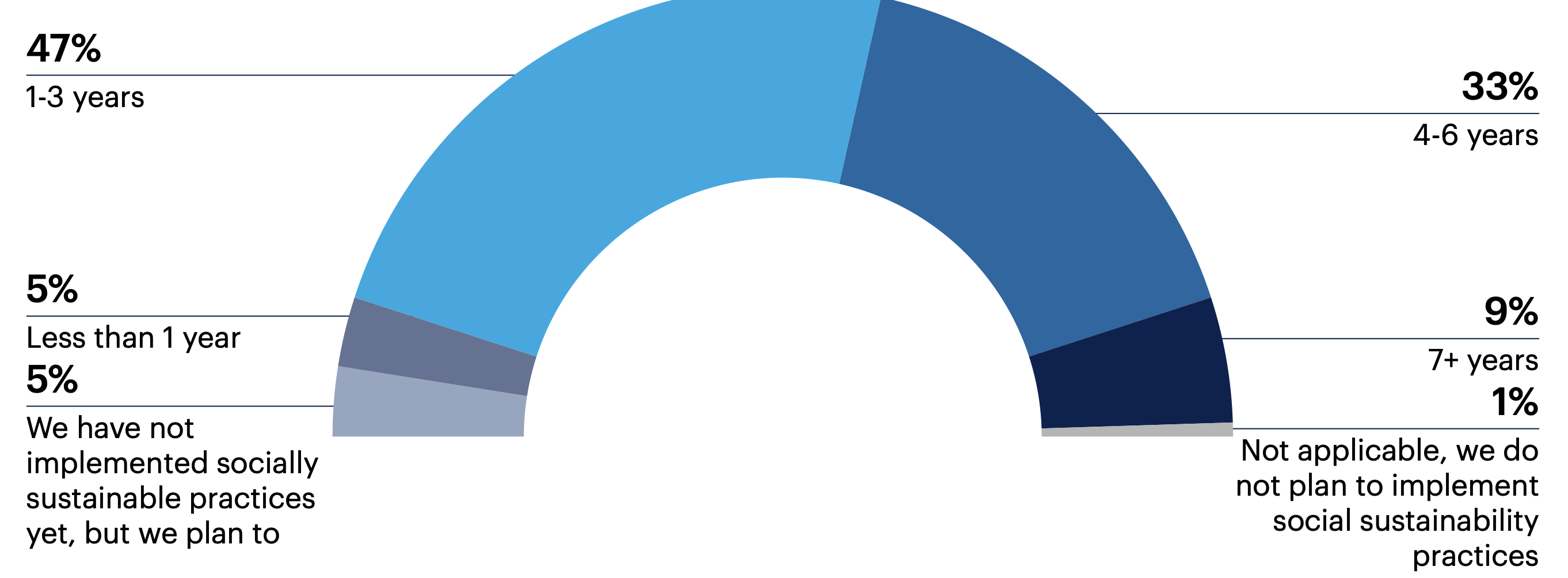
n = 100
What steps has your company taken, or plan to take, to improve the environmental sustainability of its supply chain? Select all that apply.
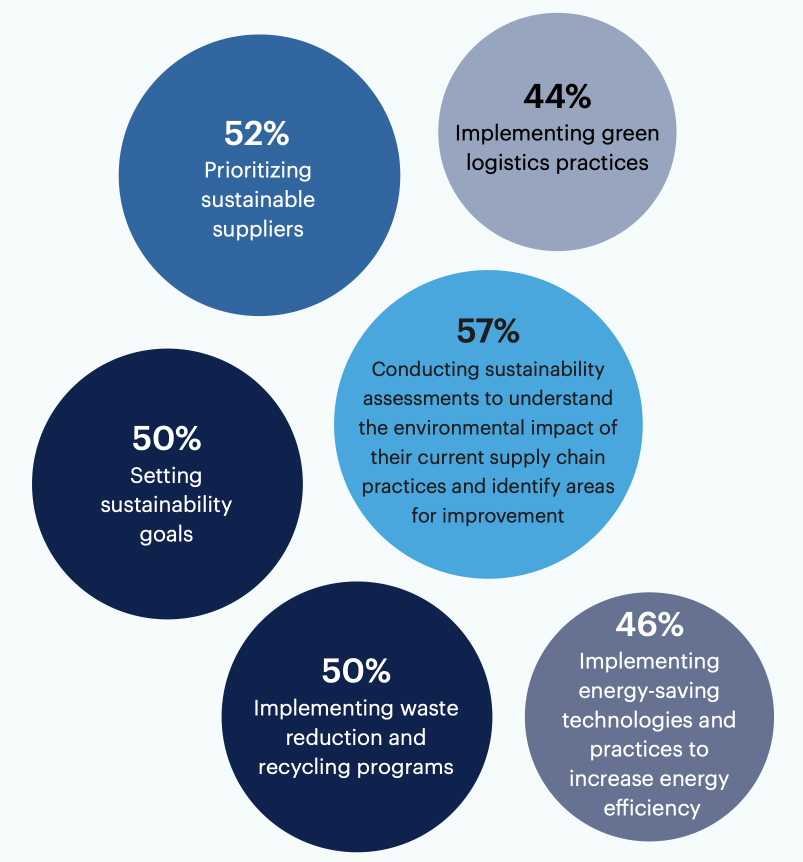
Conducting sustainability assessments (57%), prioritizing sustainable suppliers (52%), setting sustainability goals (50%) and implementing waste reduction and recycling programs (50%) are the most commonly selected ways supply chain organizations are improving their environmental sustainability.
Optimizing transportation 39% | Encouraging the use of environmentally friendly packaging materials and design products 38% | Regularly monitoring and reporting on our sustainability performance 21% | None of these 0% | Other text 0%
n = 99
Note: May not add up to 100% due to rounding
Respondent pool excludes those who selected “Not applicable, we do not plan to implement social sustainability practices” to the question “How long has your company been implementing environmentally sustainable practices across its supply chain?”
Do you believe that companies have a responsibility to ensure that their supply chain practices are environmentally sustainable?
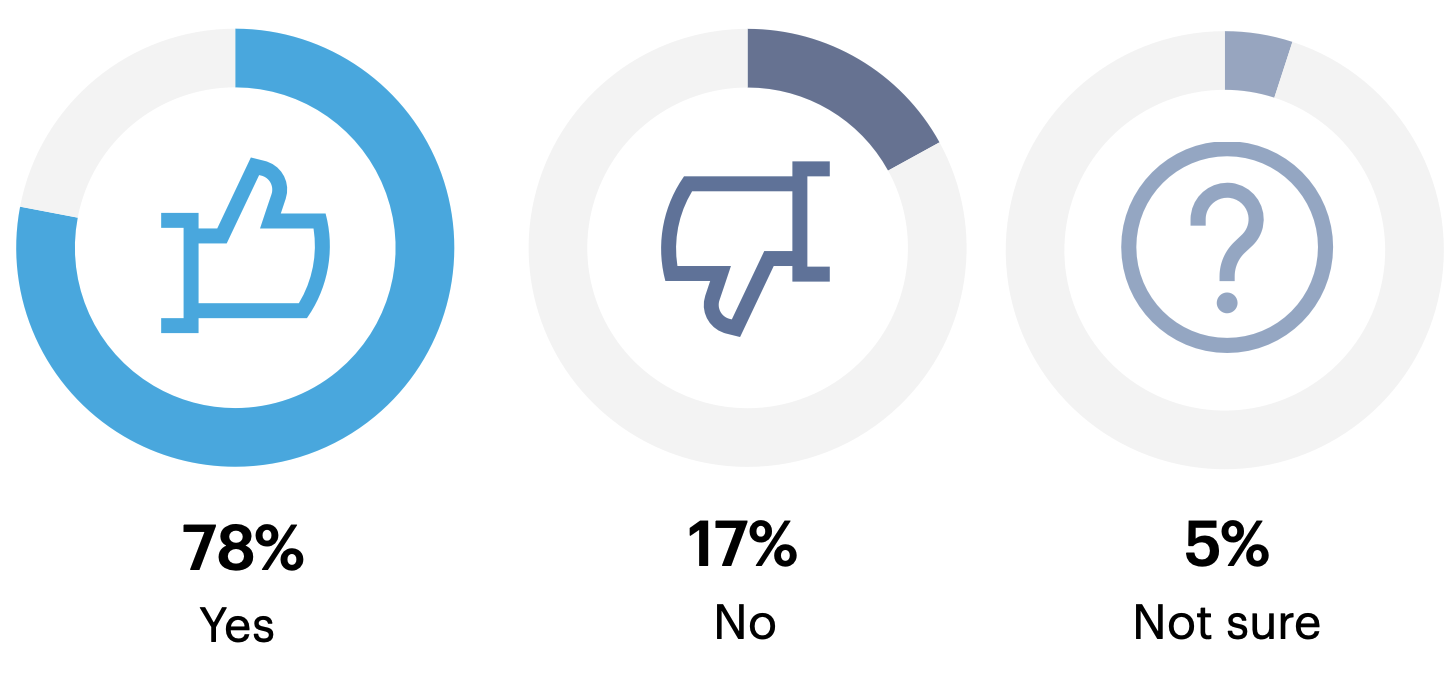
Over three-quarters of respondents (78%) say that companies have a responsibility to ensure their supply chain practices are environmentally responsible.
n = 100
In your opinion, how important is it for a company to implement environmentally sustainable supply chain practices?
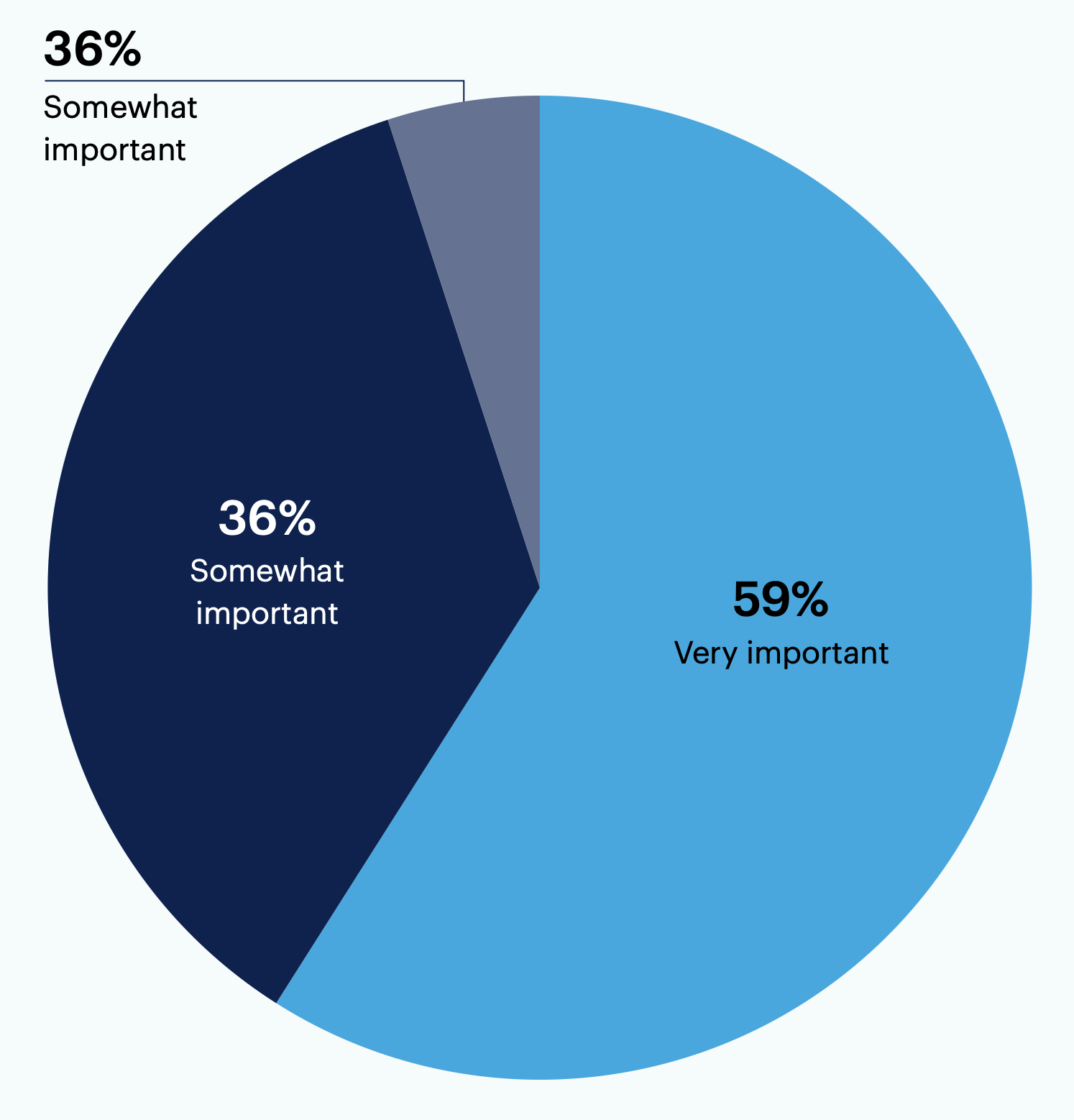
However, fewer than two-thirds of respondents (59%) say it is very important for companies to implement environmentally sustainable supply chain practices.
n = 100
Question: What specific, tactical steps do you think companies can take to improve the environmental sustainability of their supply chains?
1. Encourage alternate fuels
2. Reduce Air Freights
3. Minimize empty hauls
4. Drive localisation
Many organizations still suffer from significant gaps in their sustainability verification processes
Just 12% of respondents rate their company’s supply chain as excellent, while 42% say it’s fair to poor.
How would you rate the environmental sustainability of your company's supply chain?

n = 94
Note: May not add up to 100% due to rounding
Respondent pool excludes those who selected “We have not implemented socially sustainable practices yet, but we plan to” or “Not applicable, we do not plan to implement social sustainability practices” to the question “How long has your company been implementing environmentally sustainable practices across its supply chain?”
Just under half of respondents (46%) say they verify the environmental sustainability of their supply chain through both external audits and internal assessments, while 31% rely on internal assessments alone.
How does your company verify the environmental sustainability of its supply chain?
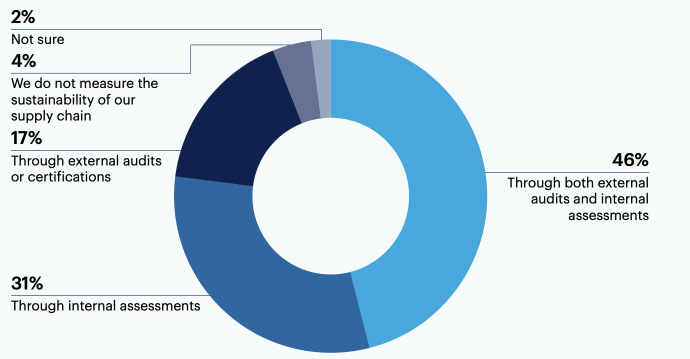
n = 94
Note: May not add up to 100% due to rounding
Respondent pool excludes those who selected “We have not implemented socially sustainable practices yet, but we plan to” or “Not applicable, we do not plan to implement social sustainability practices” to the question “How long has your company been implementing environmentally sustainable practices across its supply chain?”
While environmentally sustainable supply chain practices help decrease risk and improve brand images, lack of regulatory clarity and a resistance to change present major challenges
Reduced environmental and social risks (63%), positive impacts on local communities (54%) and improved reputation and brand image (52%) were the most commonly selected benefits of implementing environmentally sustainable supply chain practices.
What benefits have you seen as a result of implementing environmentally sustainable supply chain practices? Select all that apply.
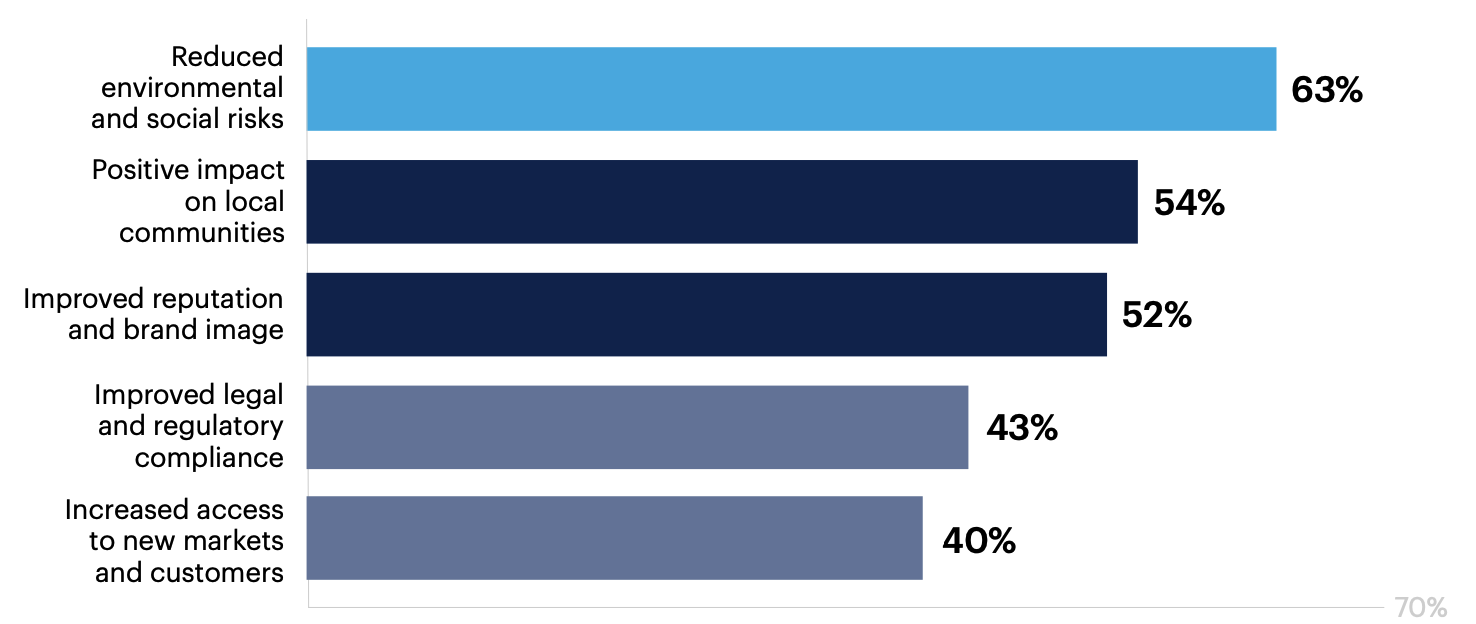
n = 94
Increased cost savings 33% | Improved employee morale 32% | Increased competitiveness 25% | We have seen no benefits 1% | Other text 0%
Note: May not add up to 100% due to rounding
Respondent pool excludes those who selected “We have not implemented socially sustainable practices yet, but we plan to” or “Not applicable, we do not plan to implement social sustainability practices” to the question “How long has your company been implementing environmentally sustainable practices across its supply chain?”
Respondents point to a lack of clear, consistent, and enforceable regulations (57%), resistance from suppliers and other stakeholders to change (53%) and a lack of transparency in the supply chain (49%) as the main barriers organizations face in ensuring an environmentally sustainable supply chain.
What are the main barriers organizations face in ensuring an environmentally sustainable supply chain? Select up to 3.
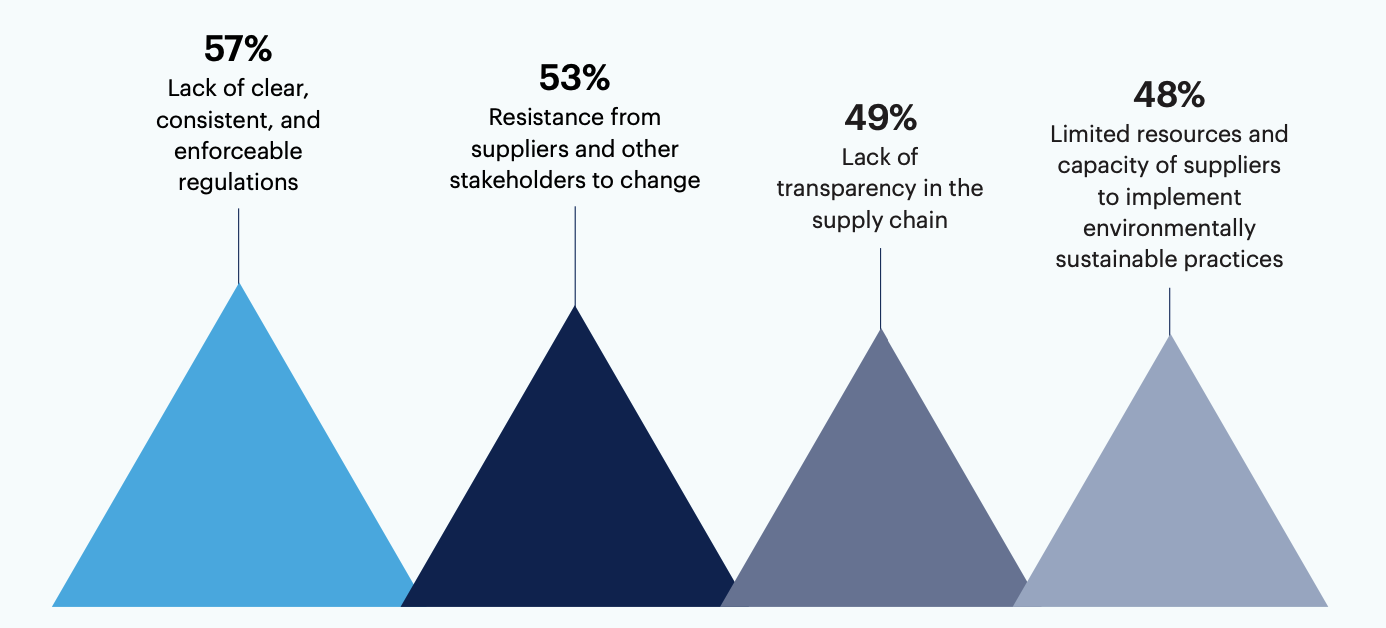
n = 100
Different cultural and legal contexts across different countries and regions, make it challenging to implement a consistent approach to socially sustainable practices 39% | Short-term focus on cost cutting 24% | Lack of executive interest 19% | Lack of awareness 17% | Complexity 14% | None of these 0% |Other text 0%
Question:Do you have any final thoughts to share on environmental supply chain sustainability?
More and more regulations will be forced on shippers [to] improve environmental sustainability. Companies which act fast on this space will have competitive advantage

Want more insights like this from leaders like yourself?
Click here to explore the revamped, retooled and reimagined Gartner Peer Community. You'll get access to synthesized insights and engaging discussions from a community of your peers.
Respondent Breakdown
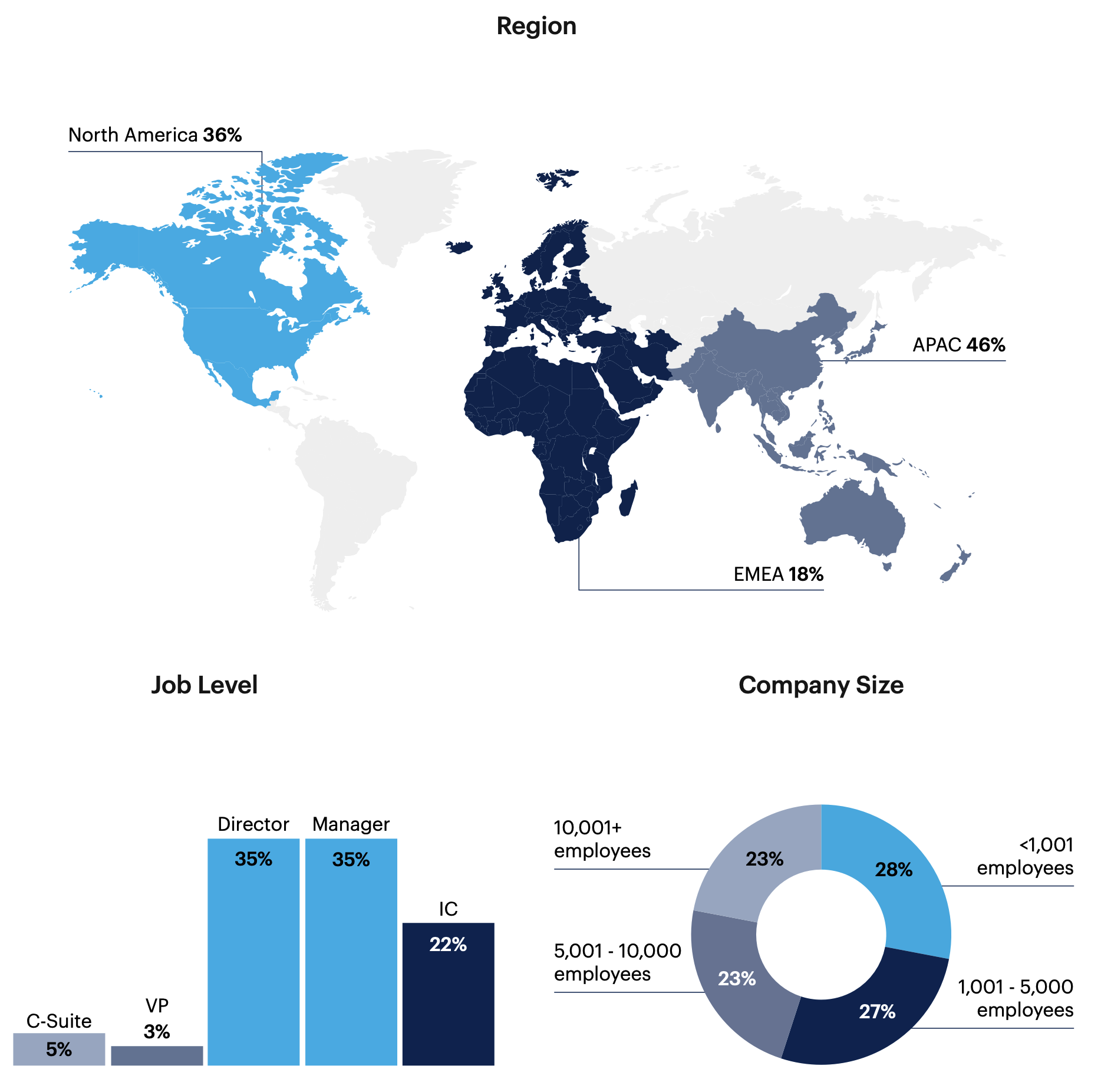
Note: May not add up to 100% due to rounding